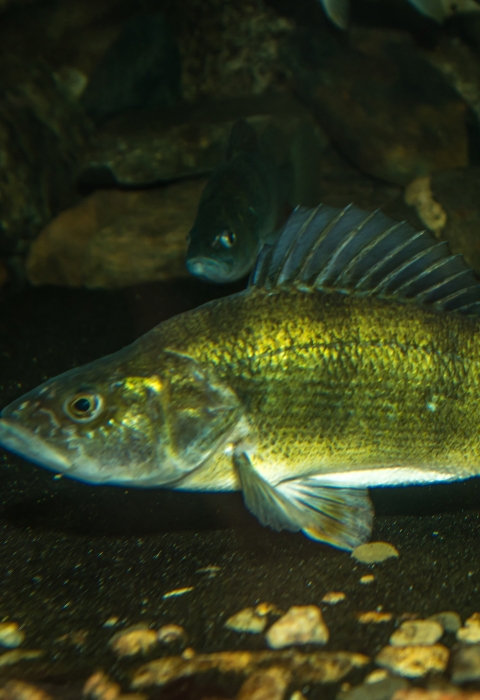Overview
Yellow perch spawn between February and July in the northern hemispheres and between August and October in the southern hemisphere. Yellow perch are found in ponds, lakes, and slow ?owing rivers, most commonly found in clear water near vegetation.
Scientific Name
Identification Numbers
Characteristics
Food
Yellow perch consume a wide variety of invertebrates and small ?sh species.
Physical Characteristics
Yellow perch are most commonly found in clear water near vegetation and tend to school near the shore during the spring.
The common length for yellow perch is 7.5 inches with the longest reported length for yellow perch being 19.7 inches.
Yellow perch are typicallyyellow to gold colored with 6 to 8 distinctive triangular shaped olive-green stripes along their sides.
The common length for yellow perch is 7.5 inches with the longest reported length for yellow perch being 19.7 inches.
Life Cycle
Yellow perch spawning occurs during the spring as water temperatures rise along the shorelines. Yellow perch eggs are deposited in long ribbons along submerged vegetation, dead branches and trees. When female yellow perch expel their eggs, groups of male yellow perch will follow the females and fertilize their eggs.
Yellow perch eggs hatch roughly 12 days after fertilization but egg incubation time varies and is influenced by water temperature. After hatching, larval yellow perch utilize their yolk sac for nourishment (~7 days) prior to transitioning to a zooplankton diet. Survival rates of larval and juvenile yellow perch are generally low in the wild because many ?sh utilize yellow perch as their natural forage species. Larval and juvenile yellow perch are prey for species such as bass, walleye, and other predators.
In order to compensate for these low survival rates, yellow perch produce large quantities of eggs. This strategy enables small populations of yellow perch to rebound if favorable habitat conditions occur.
Habitat
Yellow perch spawn between February and July in the northern hemispheres and between August and October in the southern hemisphere. Yellow perch are found in ponds, lakes, and slow ?owing rivers, most commonly found in clear water near vegetation.
Geography
Yellow perch spawning occurs during the spring as water temperatures rise along the shorelines. Yellow perch eggs are deposited in long ribbons along submerged vegetation, dead branches and trees. When female yellow perch expel their eggs, groups of male yellow perch will follow the females and fertilize their eggs.
Yellow perch eggs hatch roughly 12 days after fertilization but egg incubation time varies and is influenced by water temperature. After hatching, larval yellow perch utilize their yolk sac for nourishment (about seven days) prior to transitioning to a zooplankton diet. Survival rates of larval and juvenile yellow perch are generally low in the wild because many ?sh utilize yellow perch as their natural forage species. Larval and juvenile yellow perch are prey for species such as bass, walleye, and other predators.
In order to compensate for these low survival rates, yellow perch produce large quantities of eggs. This strategy enables small populations of yellow perch to rebound if favorable habitat conditions occur.
